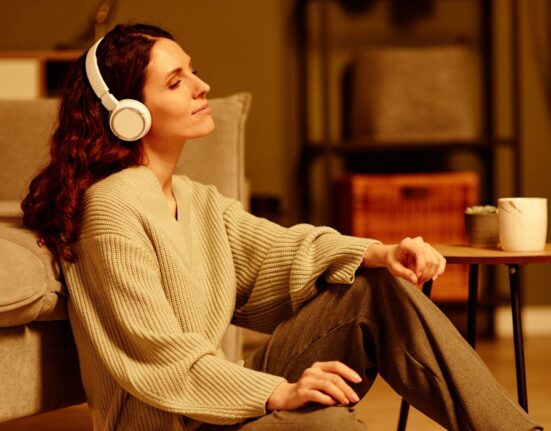Ms X is now 25 years old, working as a content writer with a reputed online site and is doing well in her career these days. She is bright, beautiful, creative, intelligent and a much-organised lady. But, the story was not the same few years back. Her friend met an accident in front of her and after that, she started having panic attacks. The situation was so bad that she stopped going out all alone. She had a persistent fear that something will happen. Due to this fear, she was not able to maintain her normal life. At the time of the panic attack she used to have symptoms like a heart attack; as she felt pain in the left side of her chest, she used to sweat a lot. She had a tingling sensation in her hands and foot. At the time of preparation for her exam, she used to have intense pain in her head.
Today, everything has changed in her life. She is having a wonderful life. She goes the gym, takes balanced food, has limited her coffee intake, groom herself very well and whenever she feels a little anxious she practices meditation for 10 minutes and applies to breathing technique to make herself calm. All of this could have been possible because she visited a psychologist and he guided her to overcome her panic disorder and anxiety.
Anxiety is so common as a disorder that a huge proportion of the population suffers due to this. Anxiety is a feeling of unease, worry or fear that ranging from mild, moderate to severe. A person might feel anxious when faced with a problem at work, before/while taking a test or making an important decision. But anxiety disorders is more than the word worry or fear.
The most common disorder of anxiety GAD – Generalised Anxiety Disorder which has various symptoms like:
• Feeling Restless or feeling wound-up or on edge
• Being easily fatigued.
• Difficulty concentrating on a particular thing or having their minds go blank while speaking or working.
• Irritability.
• Muscle tension (specifically in the shoulder, neck)
• Facing difficulty in controlling the worrying thoughts.
• Difficulty falling or staying asleep or restless, unsatisfying sleep.
• Stomach aches/ diarrhoea in many cases.
But the symptoms of a Panic disorder is more prominent than the GAD as it has recurrent unexpected panic attacks. Let’s take a look at the symptoms of Panic Disorder–
• Sudden and repeated attacks of intense fear and excessive thoughts about feared objects.
• Feelings of being out of control during a panic attack
• Intense worries about where and when the next attack will occur
• Fear or avoidance of places where panic attacks have occurred in the past
• Shortness of breathlessness and feeling of chocking
• Excessive palpitation and sweating
• Increased heartbeat
• Tingling sensation in hands and feet
After having a quick glance at the symptoms of the most common and prevalent types of anxiety disorder it is important to know about how an anxious person can manage or control his/her anxiety in order to live a better life.
A. The Measured Breath Technique:
This is a very helpful technique which is often underrated and also misunderstood in terms of the process while practically applying it. The following steps can be followed to understand the correct procedure of the technique:
1. You can sit or stand, but be sure to loosen up a little before you begin.
2. Make sure your muscles are relaxed, and your head is calm.
3. Drop your shoulders and let your jaw relax.
4. Now breathe in slowly through your nose with a count of four, keep your torso down and allow your lungs and lower abdominal part to expand as you breathe in.
5. Hold the breath for a moment.
6. Now release your breath slowly and smoothly as you count to seven.
7. Repeat for four full breaths.
One can practice it every night for five minutes before sleeping to have a relaxed sleep and it will help the person to feel refreshed and energetic the next morning.
B. Keep a positive attitude:
In every situation keeping a positive attitude helps an individual with anxiety to have a better perspective of that situation. Finding positivity in every situation will help the individual to stay calm and quiet in a situation. Also, it can help to stay motivated.
C. ACCEPTANCE:
Acceptance is the key that works wonderfully with anxiety. Though the word is very simple to hear but very difficult to be adopted. As a human being, we need to understand that there are events that we can’t control. But there are afew things like our own emotions, reaction to any particular situations, behaviour which can be controlled. One who can master the art of acceptance can create balance in life.

D. BE ASSERTIVE:
Be assertive instead of aggressive as assertiveness is the courage to be ourselves. It creates transparency as we need to express our likes/dislikes; needs, feelings to the world. It’s about honesty. This is how one can overcome his/her anxiety without even blocking the emotion inside the head.

E.TIME MANAGEMENT:
Effective time management can help a person to overcome his/her anxious behaviour especially if it is about getting late or related to time. If the person learns how to manage the time effectively he/she will become more organised in daily life without panicking.
F. TIME WITH SELF:
Spend more time on yourself. You can refrain yourself from using WiFi/mobiles/tabs, log out from your social media at least once a week. Relax and spend some time on gardening, spend some time with your pet and family. You can also invest the time on your hobby that will help you to reinvent yourself and also help you to release your emotions.
These are some tips which can be followed in order to minimise the chances of having an anxiety disorder. Except the tips mentioned above one need to change his/her habits and adopt the healthier ones like physical exercises, balanced diet, good amount of sleep, take small regular trips, cutting alcohol, cigarette, caffeine, and sugar intake hoping that the steps you are taking. Stay healthy, stay positive!












Leave feedback about this